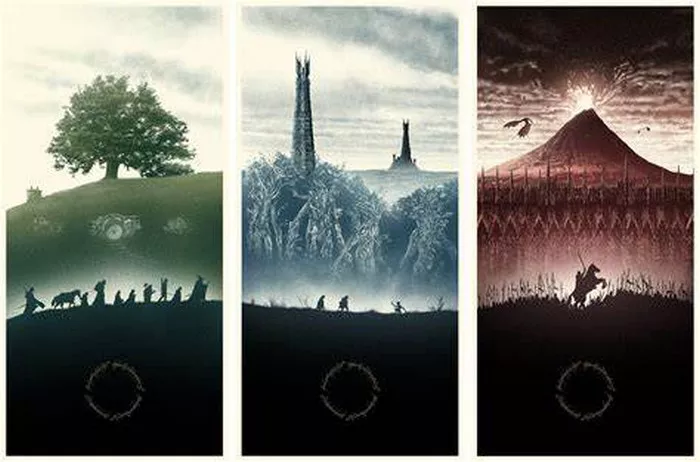J.R.R. Tolkien’s literary masterpiece, “The Lord of the Rings,” found a new life on the silver screen through Peter Jackson’s epic film trilogy. A cinematic odyssey through the enchanting realms of Middle-earth, the trilogy has become a cultural touchstone, captivating audiences with its sweeping landscapes, intricate storytelling, and memorable characters. As fans and newcomers alike prepare for a marathon viewing, the question lingers: How long is the full “Lord of the Rings” trilogy? In this exploration, we unravel the runtime intricacies, delve into the impact of extended editions, and celebrate the enduring magic that extends beyond the screen.
Understanding the Trilogy’s Runtimes: Standard vs. Extended Editions
The “Lord of the Rings” film trilogy consists of three movies, each with its own runtime in both the standard theatrical release and the extended edition. The three films, in order of release, are:
“The Fellowship of the Ring” (2001): Theatrical Runtime – Approximately 178 minutes; Extended Edition – Approximately 208 minutes.
“The Two Towers” (2002): Theatrical Runtime – Approximately 179 minutes; Extended Edition – Approximately 235 minutes.
“The Return of the King” (2003): Theatrical Runtime – Approximately 201 minutes; Extended Edition – Approximately 251 minutes.
Now, let’s calculate the total runtime for both the standard and extended editions:
Standard Edition Total: Approximately 558 minutes (9 hours and 18 minutes).
Extended Edition Total: Approximately 694 minutes (11 hours and 34 minutes).
Impact of Extended Editions: A Deeper Dive into Middle-earth
One of the defining features of the “Lord of the Rings” film trilogy is the availability of extended editions, which include additional scenes and content not seen in the theatrical releases. While the standard editions provide a comprehensive cinematic experience, the extended editions offer a deeper immersion into Tolkien’s world.
The extended editions, curated by Peter Jackson, present fans with an opportunity to explore Middle-earth with a level of detail and nuance that goes beyond what was originally shown in theaters. These additional scenes provide more character development, background lore, and an enhanced understanding of the complex relationships and motivations driving the narrative.
For devoted fans of the source material and newcomers eager to fully immerse themselves in the rich tapestry of Middle-earth, the extended editions are a cherished treasure. However, it’s essential to acknowledge that the extended runtimes demand a greater time commitment, turning the viewing experience into a true cinematic marathon.
The Marathon Experience: A Celebration of Middle-earth
For those brave enough to embark on the full “Lord of the Rings” trilogy marathon, the experience transcends mere movie-watching. It becomes a celebration of storytelling, friendship, heroism, and the enduring battle between light and darkness. The marathon is an opportunity to witness the character arcs unfold seamlessly across the three films, creating a narrative tapestry that resonates with the themes of Tolkien’s original work.
As viewers journey from the tranquil landscapes of the Shire to the towering peaks of Mordor, the marathon experience fosters a sense of camaraderie, akin to the fellowship depicted in the story. The shared moments of triumph, loss, and the unwavering commitment to a greater cause create a bond among those partaking in the marathon, whether it’s a solitary endeavor or a communal event.
Conclusion: The Timeless Allure of Middle-earth’s Cinematic Epic
In concluding our exploration of the runtime of the full “Lord of the Rings” trilogy, it’s evident that the journey through Middle-earth is not measured solely in minutes and hours. It’s a timeless odyssey that captures the imagination and leaves an indelible mark on the hearts of those who undertake it.
Whether experiencing the standard editions for a more streamlined narrative or indulging in the extended editions for a deeper dive into Tolkien’s lore, the “Lord of the Rings” trilogy remains a testament to the power of cinematic storytelling. The enduring magic of Middle-earth continues to captivate audiences, inviting them to join the quest, embrace the fellowship, and immerse themselves in a world where the triumph of good over evil echoes through the ages.
As the credits roll on the final installment, viewers emerge not only with a sense of accomplishment but also with a newfound appreciation for the artistry, craftsmanship, and sheer magnitude of the cinematic epic that is “The Lord of the Rings.” Whether revisiting the trilogy for the umpteenth time or venturing into Middle-earth for the first, the allure of the journey remains undiminished—a testament to the enduring legacy of Tolkien’s creation in both literature and film.

